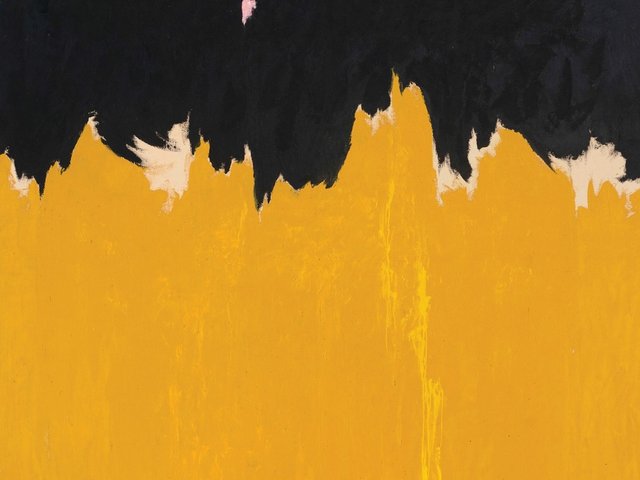Although art critics and historians have been writing about Abstract Expressionism for more than 60 years, most of the women involved continue to be marginalised. Many writers have refused to acknowledge that these women artists of the 1940s and 1950s could be innovators, and certain curators and critics have simply ignored them while continuing to focus attention on male members of the group. In recent decades, a younger generation of scholars—many of them women—has attempted to integrate these women artists into the burgeoning literature on Abstract Expressionism. Works created by these women affirm their participation in what was then a radical new aesthetic, though they have been largely absent from art historical discourse until recently.
The year was 1950, and Abstract Expressionism was capturing attention as a major development in American painting. Jackson Pollock was beginning to sell his canvases and receiving accolades in the press. Willem de Kooning painted Excavation (1950) and was gaining recognition. New ideas for abstract painting were percolating on Eighth Street, in other locations in Manhattan and outside the city in Springs, in the town of East Hampton, New York. Male and female artists alike, many of them students of Hans Hofmann, were experimenting with bold gestures, individualised expression and improvisational effects. All looked for opportunities to exhibit their latest works.
Some of the women were members of the American Abstract Artists group or active at Atelier 17, the printmaking workshop. A few, such as Lee Krasner, Perle Fine and Joan Mitchell, had shown with commercial galleries, but for most of the women, group exhibitions were their best chance of gaining recognition and making sales. In a most fortuitous development, a group of uptown galleries joined forces to sponsor a series of annual exhibitions of abstract art. The first—the Ninth Street Exhibition of Paintings and Sculpture—was held in May and June of 1951 at 60 East Ninth Street, in Greenwich Village. After that, from 1953 to 1957, the New York Painting and Sculpture Exhibitions took place annually uptown, at the Stable Gallery, located at 924 Seventh Avenue, at Fifty-Eighth Street. Housed in a converted horse stable, these shows were sponsored by galleries that represented a few of the artists. Three women—Perle Fine, Joan Mitchell and Elaine de Kooning—often sat on the 25-member Committee of Artists that selected the painters and sculptors for the shows. Not coincidentally, these three (and also Grace Hartigan and Yvonne Thomas) were included in every annual exhibition; Helen Frankenthaler was selected for all but one of the shows.
In these annual group shows between 1951 and 1957, at least 50 women were selected to participate—some for several shows and some just once. As members of the Committee of Artists, Fine, de Kooning and Mitchell became activists for themselves and for other women artists seeking recognition. Since only a few commercial galleries and a handful of co-op galleries downtown would show women’s art in the 1950s, these shows gave dozens of women artists an opportunity to have their work on exhibit, as well as the hope of being discovered.
The women must have had some awareness of the macho attitude of their male counterparts when they were treated poorly at the Cedar Bar, a popular meeting place for the artists, and marginalised at the Eighth Street Club. Membership in The Club, a gathering place for artists and intellectuals, was initially restricted to males only. Women attended some meetings and even participated in events, including spirited debates on whether “Abstract Expressionism” was an appropriate designation for the art they were producing.
Despite all evidence of their presence, participation and paintings, it would be decades before more than a handful of women could take their place in the annals of art history as part of Abstract Expressionism. As Hartigan in 1951 remarked in her journal after a visit with Frankenthaler, Krasner, Pollock and Barnett Newman: “Clem [Greenberg] got on his kick of ‘women painters’. Same thing—too easily satisfied, ‘finish’ pictures, polish, ‘candy’. He says he wants to be the contemporary of the first great woman painter. What shit—he’d be the first to attack.”
Even today, the typical roll call of Abstract Expressionists includes only white urban males, the occasional woman (usually Krasner) and virtually no African Americans, such as Norman Lewis and Romare Bearden. If Abstract Expressionist painting is to be understood as negotiating visual metaphors for disorder, chaos, materiality and other issues of the postwar era in the US, it must be acknowledged that women artists also appropriated this language.
• Joan Marter is a professor of art history at Rutgers University. This is an extract from Missing in Action, her chapter in Woman of Abstract Expressionism, which is published by Denver Art Museum and Yale University Press to accompany the exhibition of the same title. Organised by the Denver Art Museum, Women of Abstract Expressionism (until 25 September) travels to the Mint Museum, North Carolina (22 October-22 January 2017).



